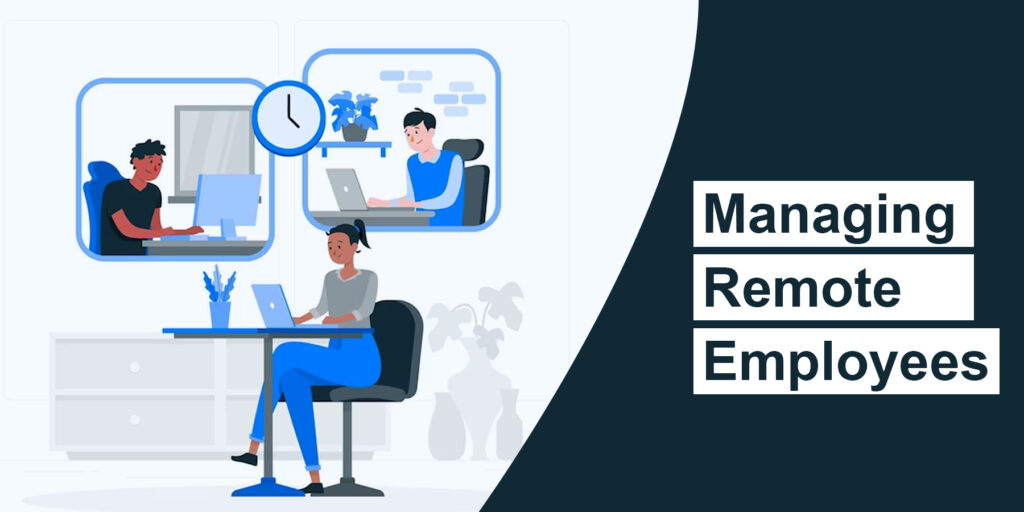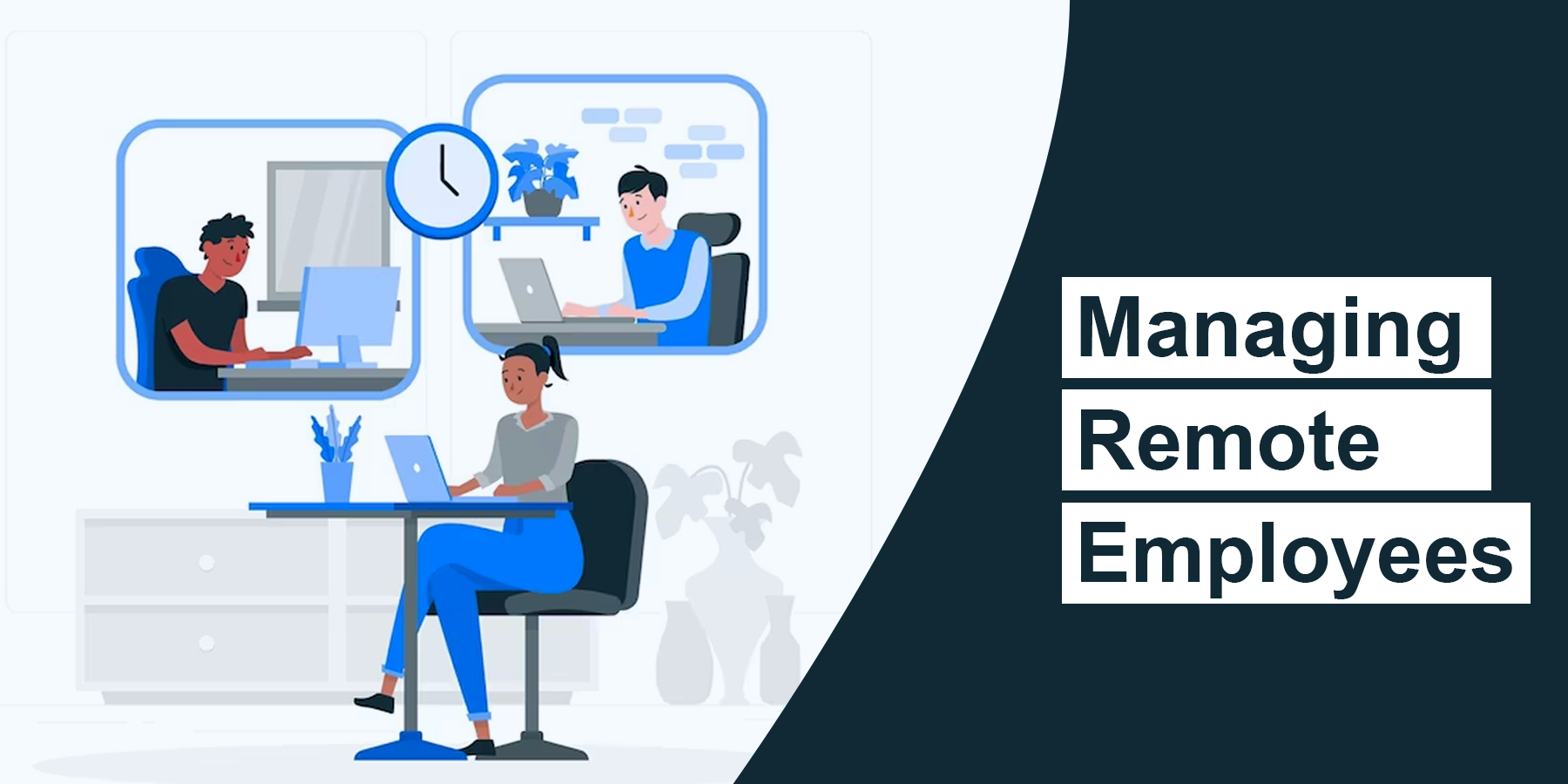
In recent years, the workspace has transformed dramatically, pushing remote work into the mainstream. Many organizations have adopted remote working as a permanent or hybrid solution. But how do you ensure the success of your remote teams? This blog will discuss eight effective strategies for managing remote teams with Google Workspace and achieving genuine success.
Table of Contents
What does Remote Support Involve?
Eight Strategies for Managing Remote Employees and Teams
- Establish Active Communication
- Balance Synchronous and Asynchronous Collaboration
- Embrace Passive Communication
- Use a Task-Based Over Time-Based Approach
- Encourage Instant Communication
- Sharing and Collaborating
- Facilitate Online Collaboration
- Keep Your Remote Employees Engaged
Is Remote Work Here to Stay?
Before we dive into the strategies for managing remote employees, let’s understand why remote work is here to stay. A recent McKinsey study revealed that 75% of employees who began working remotely during the pandemic reported maintaining or even improving their productivity. It highlights the potential of remote work to boost efficiency.
Additionally, a study conducted by Grow Remote found that 97% of employees prefer a hybrid or fully remote working environment. The benefits of remote work extend beyond productivity, including heightened job satisfaction and improved work-life balance.
What does Remote Support Involve?
When managing remote teams, providing physical and digital support is essential. Physically, ensure your remote employees have the necessary resources for a comfortable workspace, including ergonomic chairs and functional desks. Remember, even in a remote setting, you are responsible for their health and safety.
Digitally, Google Workspace offers tools to enhance productivity for remote teams. These digital resources will be the focus of our discussion in the following strategies.
Eight Strategies for Managing Remote Employees and Teams
Discover eight essential strategies that will empower you to effectively manage your remote employees and unlock their full potential.
1. Establish Active Communication
Active communication is the cornerstone of managing remote employees. Regular check-ins are vital, particularly for teams in a hybrid scenario, where some members are in the office, and others work remotely. Schedule twice-weekly video check-ins for small and medium-sized teams to maintain balance while managing remote employees.
During these check-ins, discuss accomplishments from the past week and set goals for the week ahead. It helps track progress and fosters a sense of direction and purpose within the team. Furthermore, remember to leave room for casual conversation and small talk while managing remote employees to nurture team camaraderie, which can be challenging to maintain in remote settings.
2. Balance Synchronous and Asynchronous Collaboration
One of the challenges in remote work is finding the right balance between synchronous and asynchronous collaboration. Synchronous collaboration involves real-time interaction through video calls or simultaneous document editing. On the other hand, asynchronous collaboration allows team members to work on tasks at different times.
Too many video calls can lead to “zoom fatigue,” so it’s crucial to strike a balance while managing remote employees. Encourage your team to collaborate asynchronously by sharing documents and ideas beforehand. Setting clear meeting agendas and sharing documentation in advance can streamline discussions and make them more productive.
3. Embrace Passive Communication
Active monitoring of remote employees can lead to distrust. Instead, consider passive communication methods that provide transparency without invasive surveillance. For instance, encourage your team to use tools like Google Calendar to update what they’ve worked on during the day and their plans for the next day.
This passive communication method allows managers to gain insights into team activities without constant check-ins. This manner of managing remote employees will encourage trust and accountability within the team.
4. Use a Task-Based Over Time-Based Approach
Remote work offers flexibility, and it is best to capitalize on this. Adopt a task-based rather than a rigid time-based approach while managing remote employees. While you may expect your team to have some overlapping availability, focus on defining tasks and tracking progress.
Tools like Google Tasks and Todoist can help manage tasks efficiently. Setting clear tasks and objectives while managing remote employees will help them manage their time effectively while maintaining accountability.
5. Encourage Instant Communication
Email may not always be the most effective means of communication in remote teams. Instant messaging tools like Slack, Google Chat, and Microsoft Teams offer faster, real-time communication. These tools are valuable for quick questions, clarifications, and casual interactions while managing remote employees. They help bridge the gap between remote employees.
Create dedicated channels or rooms for different departments or projects to organize discussions and keep everyone informed. These tools are also helpful in broadcasting information quickly.
6. Sharing Resources
Remote work thrives on ubiquitous access to information and tools. Ensure that your team can seamlessly access resources across various devices. Google Workspace allows collaboration on documents, spreadsheets, and presentations across multiple platforms, making it easy to work from laptops, desktops, and even mobile devices. Providing this level of access allows your team to work efficiently, eliminating technology-related barriers.
7. Facilitate Online Collaboration
As organizations transition to hybrid work models, employee engagement becomes crucial. Creating interactive and collaborative spaces lets remote and in-office employees be connected, informed, and engaged. These tools for managing remote employees also enable you to track who has seen important announcements, ensuring effective communication.
Jamboard provides a unique solution for remote teams. It allows for collaborative work on an interactive whiteboard, facilitating teamwork even when team members are physically distant. This tool has proven invaluable for teams in fully remote or partially remote setups.
8. Keep Your Remote Employees Engaged
Finally, as companies embrace the hybrid work model, adapting to the change is the key. Managing remote teams successfully means staying ahead of the curve. Tools that are recommended for employee engagement include LumApps and Happeo.
Some companies utilize Google Sites for a straightforward and basic approach to communication and leverage platforms like Happeo and LumApps for more sophisticated communication and engagement. This strategic division allows companies to cater to various communication needs and is becoming increasingly essential for businesses looking to excel in remote and hybrid work environments.
Conclusion
The remote work revolution is here to stay, and one must manage remote teams effectively for genuine success. By implementing these eight strategies while managing remote employees and leveraging the power of Google Workspace, you can create a productive, engaged, and balanced remote workforce. Embrace the future of work with confidence and watch your remote teams flourish with this approach.
If you seek expert assistance in managing your remote team effectively, look no further than RecruitNinjas. Our skilled professionals specialize in optimizing remote team dynamics, fostering productivity, and ensuring seamless collaboration. Let us be your trusted partner in building a successful remote team. Reach out to RecruitNinjas today for tailored solutions that empower your team to thrive in the remote work landscape.
This blog is inspired by the video, ‘Managing Remote Teams – 8 Effective Strategies – For Genuine Success’ by ‘Damson Cloud.’
David Bodiford
David Bodiford has been the Chief Strategy Officer at Vserve Ecommerce. Specializing in business development and strategic planning, David leads initiatives to expand Vserve Ecommerce's market reach, focusing mainly on the B2B sector. His expertise in digital marketing and strategic partnerships is integral to enhancing the agency's ecommerce solutions.


 The Essential Tools for Managing and Collaborating with Offshore Development Teams
The Essential Tools for Managing and Collaborating with Offshore Development Teams Top 5 Advantages of Partnering with Recruitment Process Outsourcing Services
Top 5 Advantages of Partnering with Recruitment Process Outsourcing Services